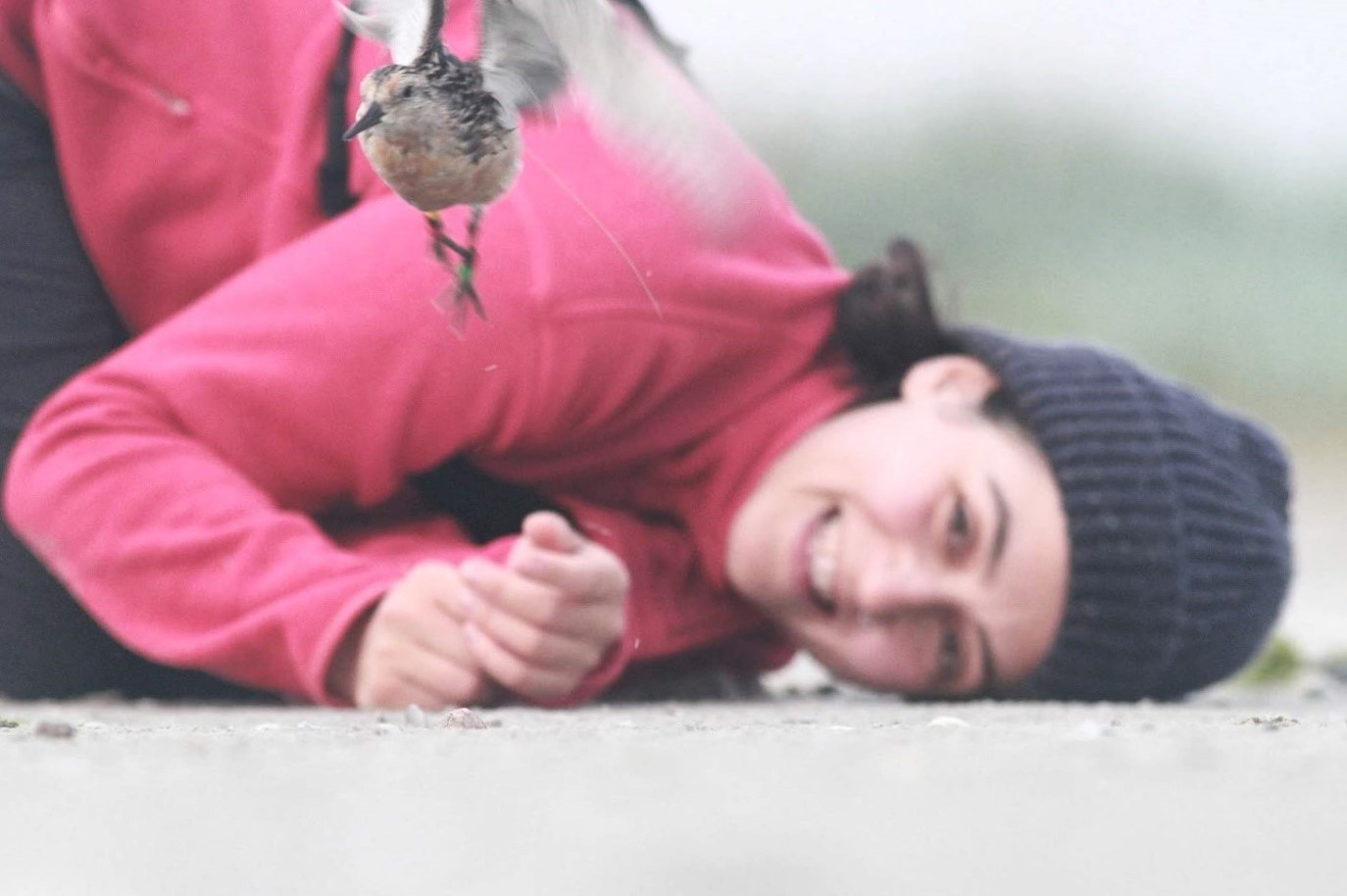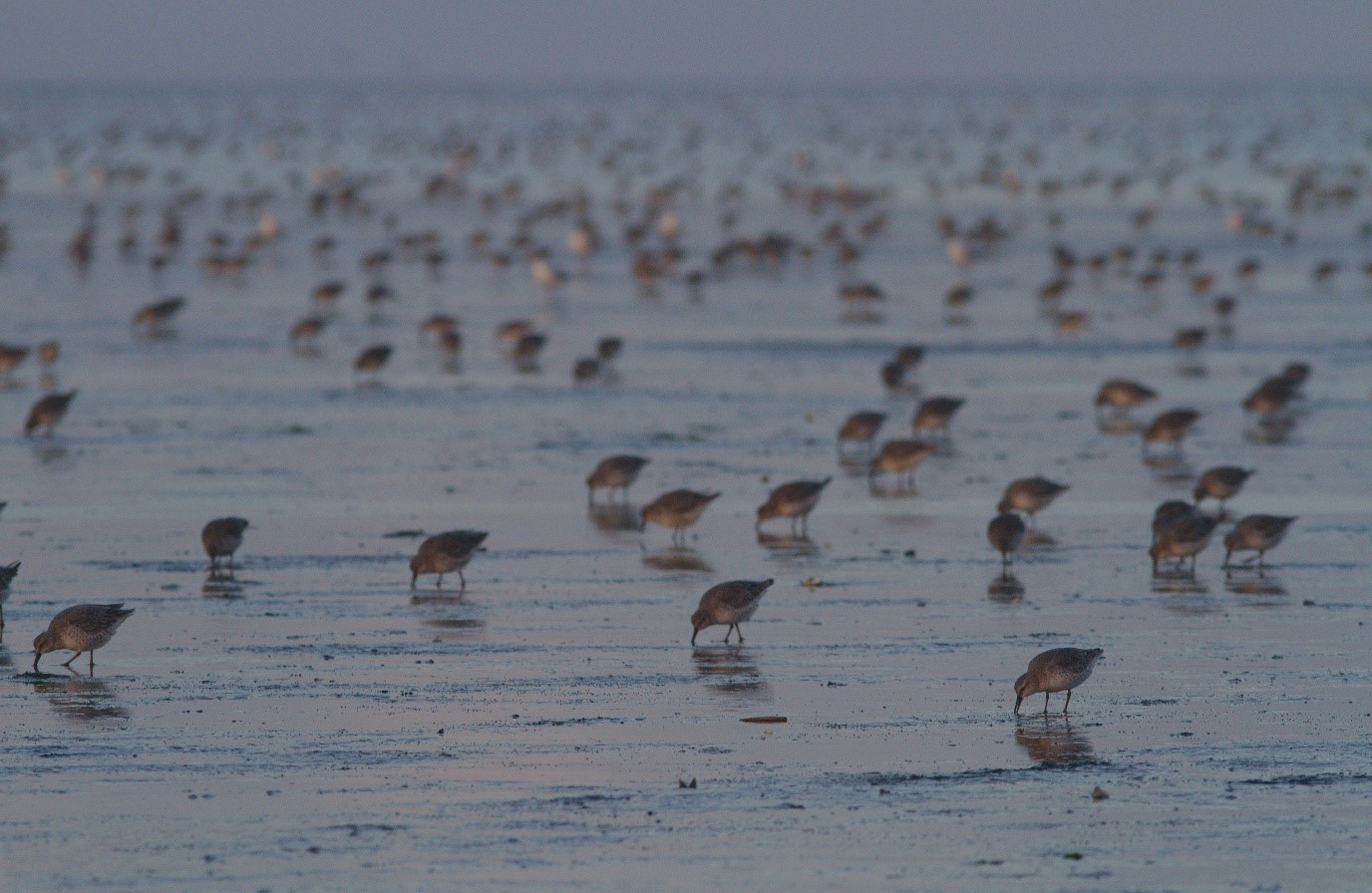
With hundreds of thousands of shorebirds searching for food on the mudflats simultaneously, different foraging strategies are crucial to find prey. Differences in foraging tactics between species have often been attributed to morphology (i.e. differences in bill length determine how deep a bird can probe in the sand), but studies now show that individuals of the same species can differ in their foraging tactics and diet, and that can be associated with their personality traits. For example, individuals that are more willing to investigate novel objects or explore new places are shown to move more in general, even in risky areas. These individuals are likely to compensate their increased energy expenditure by higher energetic gain associated with their foraging behaviour. For example, even though there is a high energetic cost to exploration, individuals are also more likely to encounter profitable foraging opportunities and high-quality prey types. However, the link between personality, foraging tactics, and diet is understudied.
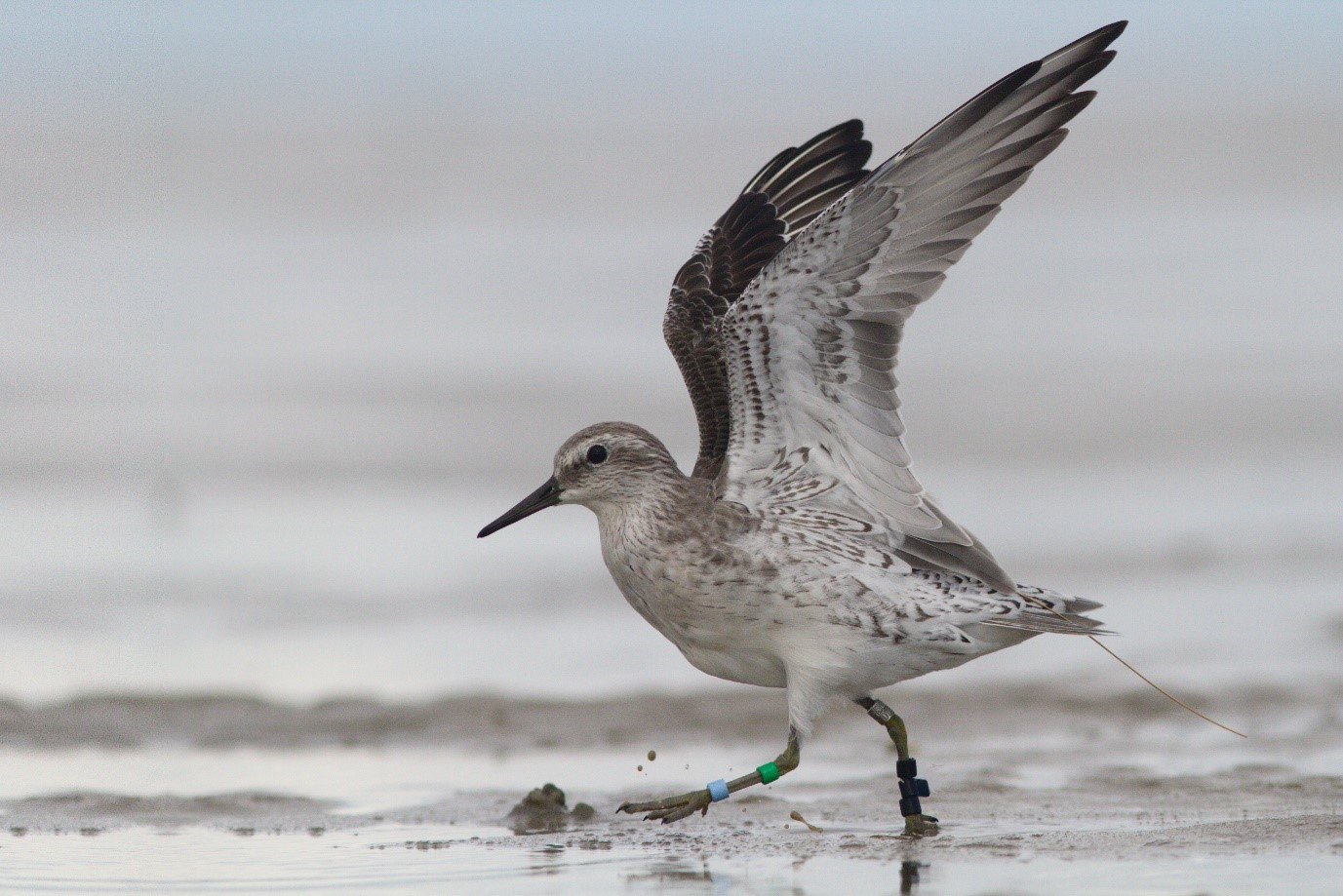
In a recent paper in the Journal of Animal Ecology, we investigated how exploratory behaviour in red knots (Calidris canutus islandica) is associated with foraging tactics and diet by combining laboratory experiments (personality), field observations (foraging tactics), and stable isotope analysis (diet). First, we developed a mobile experimental arena to measure personality, or more specifically exploration speed, in controlled settings. We validated the method by repeated testing of individuals over time and contexts. Exploratory birds in the first trial, were exploratory in subsequent trials too. This setup allowed us to measure exploratory personality at the field site, eliminating the need to bring birds into captivity for long periods of time. After releasing birds within days of their capture, we went to the mudflats to find these same individuals and observe their foraging behaviour in the wild.
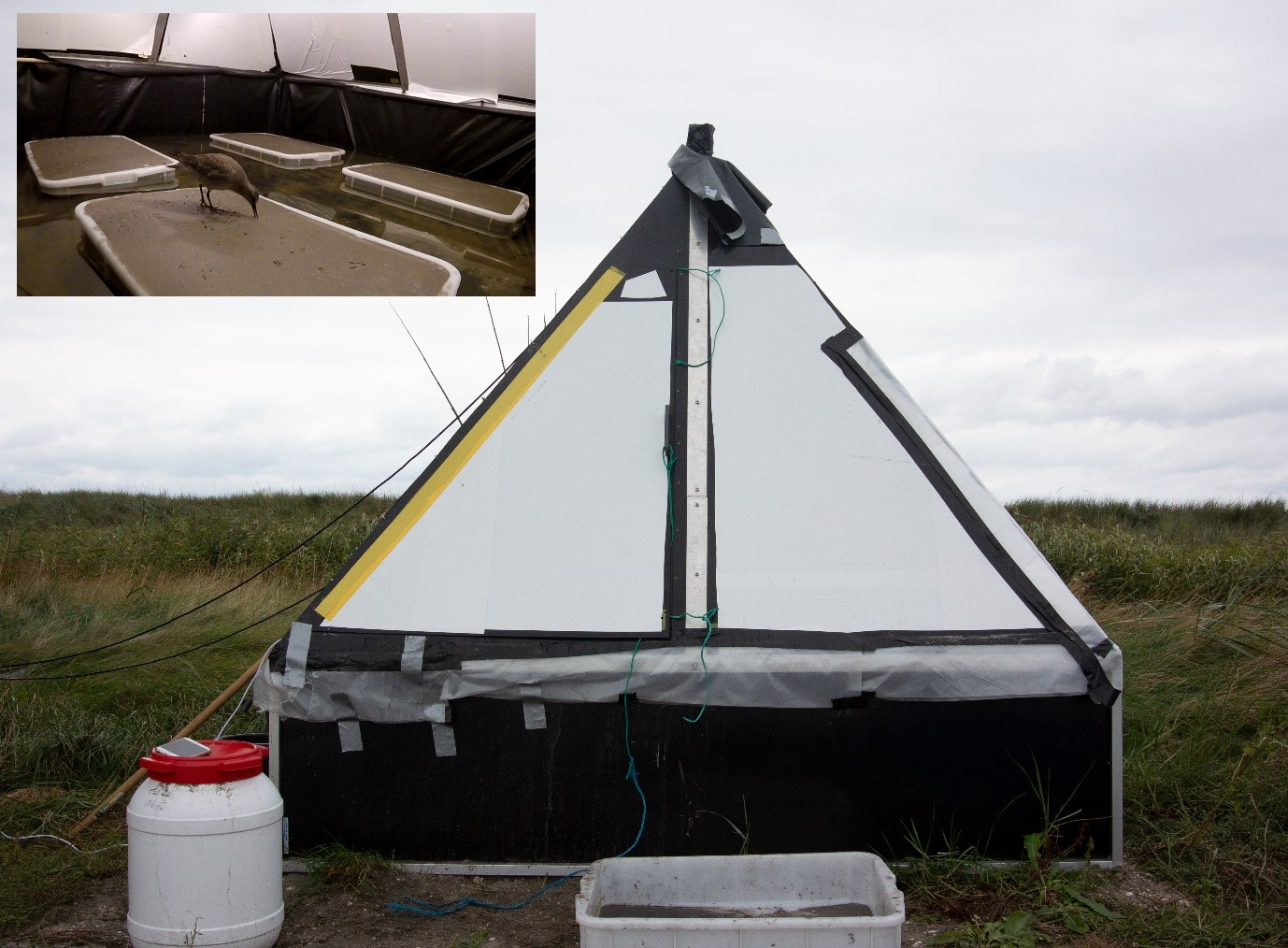

In previous studies, red knots were shown to be mollusc specialists that mainly eat hard-shelled prey (e.g. cockles) buried in the sediment. We observed that while most of the red knots probe the sediment to find hard-shelled prey, some of them also use visual foraging to catch soft prey: looking at the sediment, jumping back and forth and running after shrimp. Shrimp may provide a higher energy content for a red knot, but it also requires a lot more effort and energy to hunt. However, just like in other species, us humans included, some red knots will take risks with the chance of high rewards, while others remain in their ‘comfort zone’. We found that faster exploring red knots use more visual foraging and eat more soft prey than slower explorers. We confirmed our field observations with diet analysis based on blood d15N and d13C stable isotope values of plasma and red blood cells. These isotope values in the blood samples showed that slower explorers mainly consumed hard-shelled prey while faster explorers consumed more soft than hard-shelled prey.
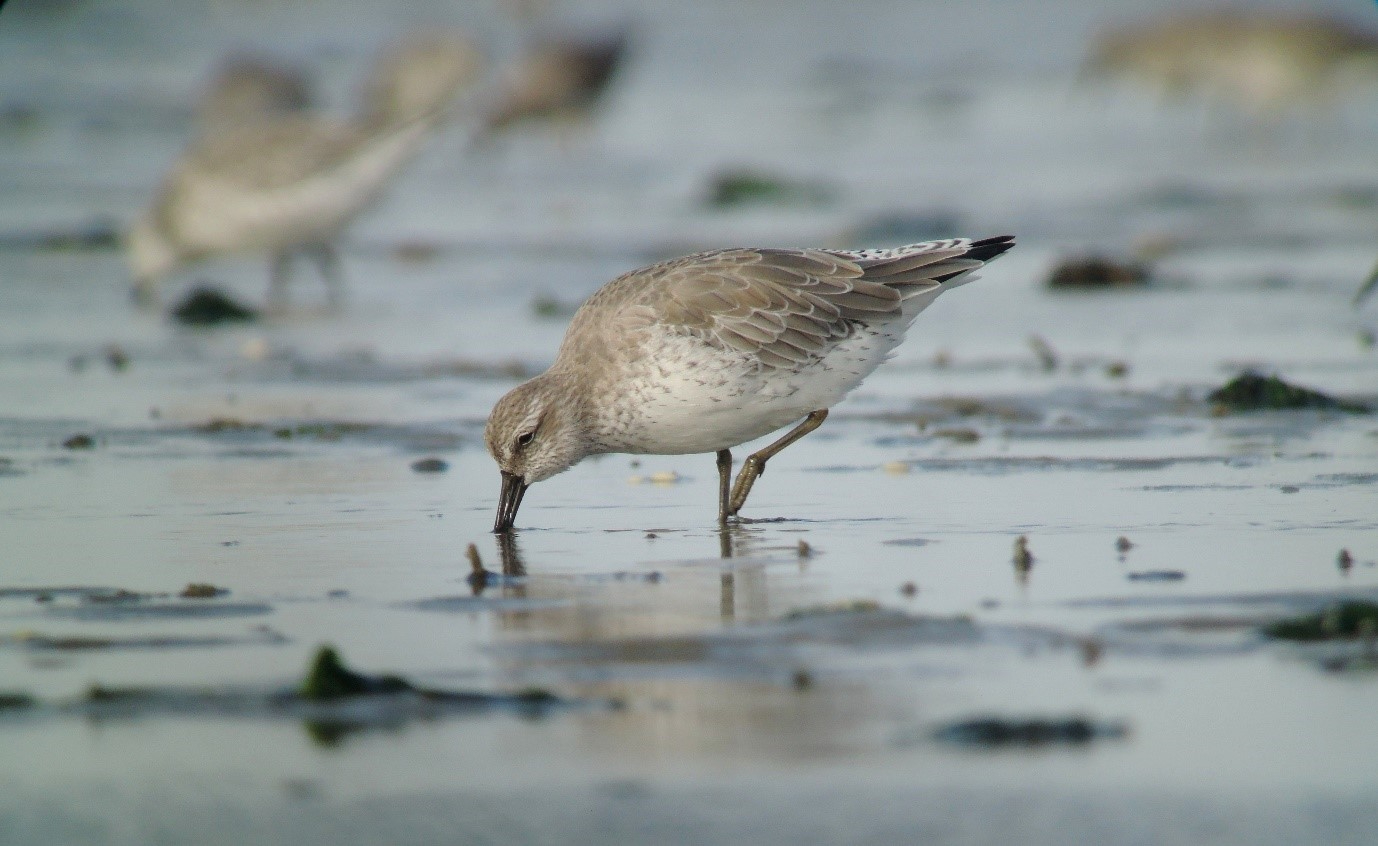
We showed that foraging tactics and diet are associated with a personality trait, independent of morphological differences. Our results raise the question of where and how the consistent individual differences originate. What does it mean that exploratory personality is strongly connected with foraging behaviour and diet? Differences in experience between individuals through development could set the individuals on different trajectories. Through positive feedback between learning to detect, catch, and process food, this differentiation in diet can favour behavioural consistency and maintain among-individual variation. If we understand when, to what extent, and by which mechanisms consistent individual differences develop, we can better understand the origin and maintenance of consistent individual differences between the members of the same population.
This blog was published in the Journal of Animal Ecology also as a story behind her first paper: https://besjournals.onlinelibrary.wiley.com/doi/full/10.1111/1365-2656.13632
